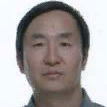
Mingyue Ding
Work place: School of Life Science and Technology, Huazhong University of Science and Technology , Wuhan, China
E-mail: xmboshi.zhang@gmail.com
Website:
Research Interests: Pattern Recognition, Artificial Intelligence
Biography
Mingyue Ding was born in Sichuan, China on May 13, 1961. He received his Bachelor Degree in electronic engineering in 1982 from Beijing University of Aerospace and Aeronautics, Beijing, China. In 1985, he received his Master Degree in communication and electronic system from Chinese University of Electronic Science and Technology, Chengdu, Sichuan, China. He got his Doctoral Degree in communication and electronic system in 1988 from HUST, Wuhan, Hubei, China. From 1988 to 2000, he was a lecturer, associate professor and full professor at the Institute for Pattern Recognition and Artificial Intelligence, HUST. From 2000 to 2005, he was a researcher associate in Robarts Research Institute, The University of Western Ontario, London, Ontario, Canada. Currently he is the chairman and full professor of Department of Bio-medical Engineering, HUST, Wuhan, Hubei, China. More than 7 books and 300 academic papers were published by him and his students. Prof. Ding is the senior member of IEEEE and member of SPIE. He received an Alexander von Humboldt Fellowship from Germany in 1991 and was awarded a Canadian Creative Award in 2001.
Author Articles
Diffraction Tomography: It's Application in Ultrasound
By Omer M. Gaddoura Mingyue Ding
DOI: https://doi.org/10.5815/ijem.2011.04.02, Pub. Date: 29 Aug. 2011
Ultrasound Diffraction Tomography (UDT) is an important alternative to conventional B-mode imaging. Generally, in diffraction tomography, the most universal available computational strategies for reconstructing the object from its projections are interpolation in the frequency domain and interpolation in the space domain. They are analogous to the direct Fourier inversion and backprojection algorithms of straight ray tomography. In this paper two B-spline interpolation functions are introduced. Due to the computational expenses in the space domain interpolation, we apply the interpolation in the frequency domain to implement our new interpolation functions. We also compare our results with filtered backprojection algorithm result. The validity and feasibility of our method was tested using an agar phantom to mimic the human tissue, olive to mimic the cancer, and water to mimic the cyst. The experimental results show that this method has a promising impact in clinical applications.
[...] Read more.Common Carotid Artery Lumen Segmentation in B-mode Ultrasound Transverse View Images
By Xin Yang Mingyue Ding Liantang Lou Ming Yuchi Wu Qiu Yue Sun
DOI: https://doi.org/10.5815/ijigsp.2011.05.03, Pub. Date: 8 Aug. 2011
To evaluate atherosclerosis, common carotid artery (CCA) lumen segmentation requires outlining the intima contour on transverse view of B-mode ultrasound images. The lumen contours are automatically segmented using a morphology method in this paper. The proposed method is based on self-adaptive histogram equalization, non-linear filtering, Canny edge detector and morphology methods. Experiments demonstrated that the merit (FOM) value of lumen segmentation is 0.705. The comparison between proposed method and manual contours on 180 transverse images of the CCA showed a mean absolute error of 0.47±0.13 mm and mean max distance of 2.08±0.63 mm respectively. These results compare favorably with a clinical need for reducing use variability.
[...] Read more.A Novel Spiking Cortical Model based Filter for Impulse Noise Removal
By Xuming Zhang Mingyue Ding Yi Zhan Yangchao Dou Zhouping Yin
DOI: https://doi.org/10.5815/ijem.2011.02.07, Pub. Date: 8 Apr. 2011
A novel spiking cortical model based switching mean filter for removing impulse noise is presented. In the proposed filter, the noise detector using spiking cortical model is first adopted to identify the pixels that are likely to be corrupted by impulse noise. Then the detected impulses are removed by the weighted mean filter while the noise-free pixels are left unaltered. Extensive simulations show that the proposed filter outperforms a number of existing decision-based filters due to its excellent performance in terms of effectiveness in image restoration. Because of its outstanding restoration performance, the proposed filter can be used for noise removal in numerous consumer electronics products such as digital camera and digital television.
[...] Read more.Research on Fuzzy Enhancement in the Diagnosis of Liver Tumor from B-mode Ultrasound Images
By Wu Qiu Feng xiao Xin Yang Xuming Zhang Ming Yuchi Mingyue Ding
DOI: https://doi.org/10.5815/ijigsp.2011.03.02, Pub. Date: 8 Apr. 2011
Fuzzy enhancement is applied in computer aided diagnosis of liver cancer from B mode ultrasound images as a pre-processing procedure in this paper. It was evaluated with three classifiers including K means, back propagation neural network and support vector machine using 25 features from first order statistic (FOS), gray-level co-occurrence matrix (GLCM), gray-level run-length matrix (GLRLM), Grey level dependant matrix (GLDM) and LAWS. In the analysis of 166 normal liver tissue, 30 hemangioma and 60 malignant tumor, our method improved the classification accuracy of three classifiers (K means, BP neural network and support machine vector) in distinguishing liver cancer, hemangioma and normal liver cancer from B mode ultrasound images. It is proved that fuzzy enhancement as an efficient preprocessing procedure could be used in the computer aided diagnosis system of liver cancer.
[...] Read more.Other Articles
Subscribe to receive issue release notifications and newsletters from MECS Press journals